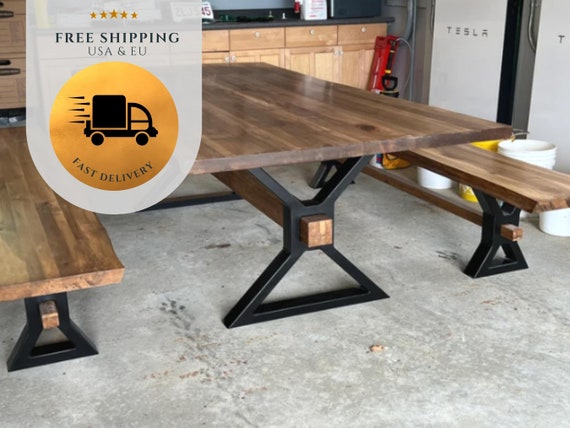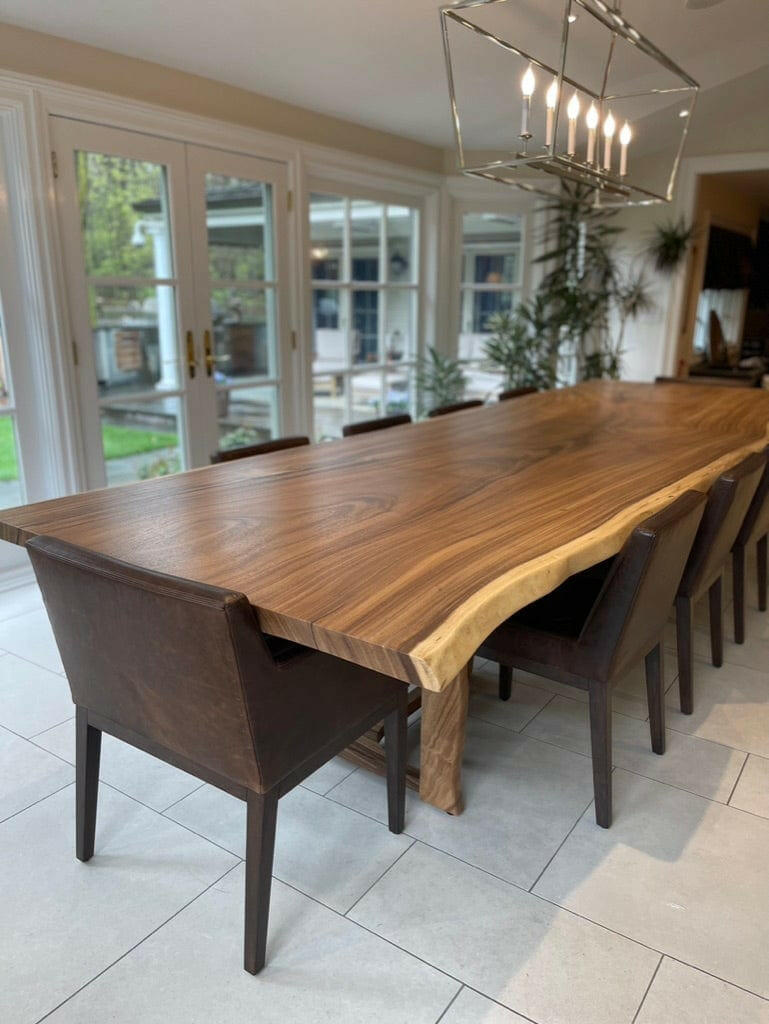The Ultimate Guide to Selecting the Ideal Designs for Eating Table Legs
Picking the ideal designs for dining table legs is a nuanced process that requires stabilizing visual charm with functional considerations. Customized options provide an opportunity for individual expression, guaranteeing your table comes to be an unique focal factor.
Modern Dining Table Legs
In the realm of modern furnishings style, modern dining table legs stand out for their streamlined and cutting-edge visual appeals. Characterized by clean lines and minimal kinds, these legs usually make use of materials such as stainless steel, chrome, and tempered glass to develop an innovative aesthetic appeal. Not only do they boost the overall elegance of the eating table, however they likewise add to its structural stability and useful flexibility.
One of the key attributes of modern table legs is their versatility to various table tops, from marble and glass to timber and engineered surface areas. Designers often try out geometric forms, including angular, conical, and even sculptural types, to include a special touch to each item. This technique not just guarantees a modern look however additionally permits better personalization to fit private preferences and interior decoration.
Modern eating table legs also highlight convenience of maintenance and durability. Using high-quality, corrosion-resistant materials makes sure long life while requiring very little maintenance. These legs are typically made to facilitate quick assembly and disassembly, lining up with the contemporary customer's need for ease and flexibility. Thus, modern table legs symbolize both type and feature, making them a preferred selection in today's design landscape.
Rustic Farmhouse Designs
While contemporary table legs astound with their smooth, minimal layouts, rustic farmhouse designs supply a contrasting yet similarly compelling method to furnishings looks. Rooted in simplicity and functionality, rustic farmhouse table legs often include durable, solid timber buildings that evoke a feeling of warmth and tradition. These layouts normally integrate reclaimed or troubled wood, adding personality and a classic charm to any kind of dining room.
One of one of the most distinct features of rustic farmhouse table legs is their significant, durable look. Commonly crafted from oak, yearn, or various other sturdy timbers, these legs can include a selection of shapes, from straight and square to elegantly transformed or tapered designs (dining room table legs). The workmanship highlights durability, with hand-finished information that highlight the all-natural grain and flaws of the timber, making each piece distinctly stunning
In addition, rustic farmhouse legs often use time-honored joinery strategies, such as mortise and tenon joints, ensuring security and long life. This style is especially fit for creating a comfy, inviting environment, excellent for family events and public dining experiences. By integrating rustic farmhouse table legs, one can easily mix functionality with timeless aesthetic appeals, attaining a classic appeal that enhances the eating setting.
Classic and Timeless Styles
Long-lasting style defines classic and ageless eating table leg layouts, seamlessly blending custom with class. These layouts record the essence of enduring elegance, often featuring elaborate workmanship that pays tribute to historic designs while keeping a modern allure (dining room table legs). The visual equilibrium attained via such legs guarantees they continue to be pertinent and fashionable throughout numerous indoor setups, from conventional to contemporary homes

Additionally, the versatility of traditional table legs permits them to complement different tabletop layouts, creating a cohesive and harmonious eating experience. Their classic nature ensures that they endure transforming fads, making them a valuable financial investment for any kind of dining area. Whether you look for understated class or grandiose charm, traditional table legs use an excellent directory mix of form and function, enhancing the general aesthetic of your dining area.
Custom-made and One-of-a-kind Alternatives
When it comes to dining table leg designs, custom and unique options provide an unique method to showcase personal taste and creativity. These choices allow property owners and designers to move past standard layouts, developing a table that absolutely mirrors private design and the overall theme of the eating room. Personalized legs can be crafted in a myriad of forms, sizes, and patterns, from elaborate carvings to straight from the source modern geometric kinds, making it possible for limitless opportunities.
Distinct table legs can function as a focal factor in a space, drawing attention and triggering discussion. As an example, legs fashioned to appear like tree branches can bring a touch of nature inside your home, while sculptural metal legs can impart a modern and industrial flair. Another preferred pattern is incorporating multimedias, such as integrating wood with steel or glass, to create a striking comparison and added aesthetic rate of interest.

Product and End Up Selections
Picking the appropriate product and coating for eating table legs is vital to attaining the wanted visual and performance. The option of materials can substantially affect the table's longevity, upkeep, and general style. Common products for eating table legs include timber, steel, and acrylic.
Wood stays an ageless selection, providing heat and versatility. Maple, oak, and walnut are popular options as a result of their toughness and rich textures. Steel legs, such as those made from stainless steel or iron, offer a modern and commercial appearance. They are known for their toughness and reduced maintenance. Polymer legs, although less traditional, supply a modern and airy feeling, suitable for smaller rooms or minimalist layouts.
The finish related to the legs further improves their appearance and durability. Timber legs can be stained to improve their natural grain or repainted for a more consistent look. Steel legs may be brightened for a smooth finish or powder-coated for added security versus wear and corrosion. Polymer legs generally need minimal ending up however gain from routine cleansing index to preserve their quality.
Eventually, the selection of product and coating should line up with the dining table's general design, usage needs, and the existing décor of the eating room.
Conclusion
The option of eating table legs significantly impacts the visual and capability of an eating area. Modern designs use smooth, minimalist appeal, while rustic farmhouse designs give heat and personality. Mindful consideration of these elements guarantees a harmonious and aesthetically enticing eating area.